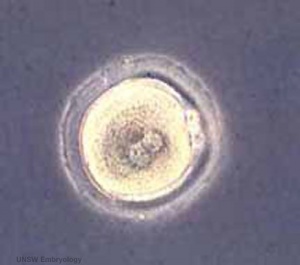User:Z3241780
Attendence
--Felicia Ton 23:16, 4 August 2010 (UTC)
--Felicia Ton 23:05, 11 August 2010 (UTC)
--Felicia Ton 23:16, 18 August 2010 (UTC)
--Felicia Ton 23:22, 15 September 2010 (UTC)
--Felicia Ton 23:39, 22 September 2010 (UTC)
Individual Assessment - Lab Questions
Lab 2
1. What factor do the syncytiotrophoblast cells secrete to support the ongoing pregnancy?
Shortly after implantation of the blastocyst within the endometrium, the syncytiotrophoblast cells secrete the hormone human Chorionic Gonadotopin (hCG) which stimulates the corpus luteum. hCG supports the ongoing pregnancy by stimulating the corpus luteum to produce increased levels of the essential progesterone and estrogen hormones, thereby preventing menstruation and proliferation of the endometrium. hCG is continually secreted throughout the pregnancy however only at low levels for the final half of the pregnancy.
2. What does the corpus luteum secrete to prevent continuation of the menstrual cycle?
The corpus luteum secretes both progesterone and estrogen, however it is primarily the elevated levels of progesterone that maintain stimulation of the endometrial cells.
Lab 3
1. What Carnegie stages occur during week 3 and week 4?
Carnergie stage 7 to stage 13.
2. What is the change in overall embryo size form the beginning of week 3 to the end of week 4?
The overall change would be between 2.6mm and 4.6mm
3. Approximately when do the cranial (anterior) and caudal (posterior) neuropores close in the human embryo?
The cranial neuropore closes at carnegie stage 11 (23-26 days)
Lab 4
1. Name the vessels that drain into the sinus venosus
The umbilical and vitelline veins, and the cardinal vein
2. What is the fate of the vitelline artery and vitelline vein?
The vitelline artery forms part of the arteries of the GIT and the vitelline veins the portal system
3. Name the 4 layers that constitute the placental barrier
The syncytiotrophoblast, cytotrophoblast, villi connective tissues and fetal capillary endothelial layers
4. What stem cells are found in abundance, and may be harvested from the placenta for therapeutic uses?
Haematopoetic stem cells
Lab 5
1. What is the origin of the gastrointestinal tract smooth muscle?
The Splanchnic mesoderm - which gives rise to the blood vessels , connective tissue and smooth muscle of the gastrointestinal region
2. At what Carnegie stage does the buccopharyngeal membrane begin to break down?
Carnergie stage 11 is when the the breaking down of the buccopharyngeal membrane begins resulting in the opening of the GIT to the amion.
3. Identify the lung developmental stage in late embryonic to early fetal period.
Budding of the lungs from the trachea begins at carnergie stage 22
4. In premature infant birth, which respiratory cell type may not have fully developed?
The type 2 alveolar cells that secrete surfactant
Lab 7
1. Briefly; what is a myotube and how is it formed?
2. What changes would I expect to see in the muscle fibre types in my legs if I:
a) Suffered a spinal cord injury
b) Took up marathon running
Picture

Peer Review
Group 1
Well done overall on your page, I learned a lot from this page alone. The table comparing the different types of transducers and scans, and use of images made the page both engaging and aesthetically appealing. Placing links for further information under each section is something that would probably be useful for all groups on their pages. So well done on that. Your use of tables was very helpful allowing the reader to grasp a conceptual understanding. The abnormalities section is very interesting and highlights the importance of this procedure in prenatal diagnosis. Judging by your references, and detail there has been some extensive research which is great. Something that could be improved would be the How It Works section where the content suddenly becomes quite technically dense. I would suggest simplifying it a little and maybe tailoring the jargon to your audience a little more. That is, someone who knows very little about Ultrasound and it's technicalities. Also, some images under the Abnormalities section would also be helpful
Group 2
Group 3
Group 5
Group 6